Introduction: All About Glue
For woodworking there's a few types of glue that are used, but by far the most common is carpenter's glue. This type of glue is called polyvinyl acetate adhesive, or PVA for short. PVA glues are inexpensive and have great holding ability, making it an ideal woodworking adhesive.
There's lots of different types of PVA glue to chose from, but I like to use Titebond III which is waterproof, has great adhesion, and accepts paints and finishes.
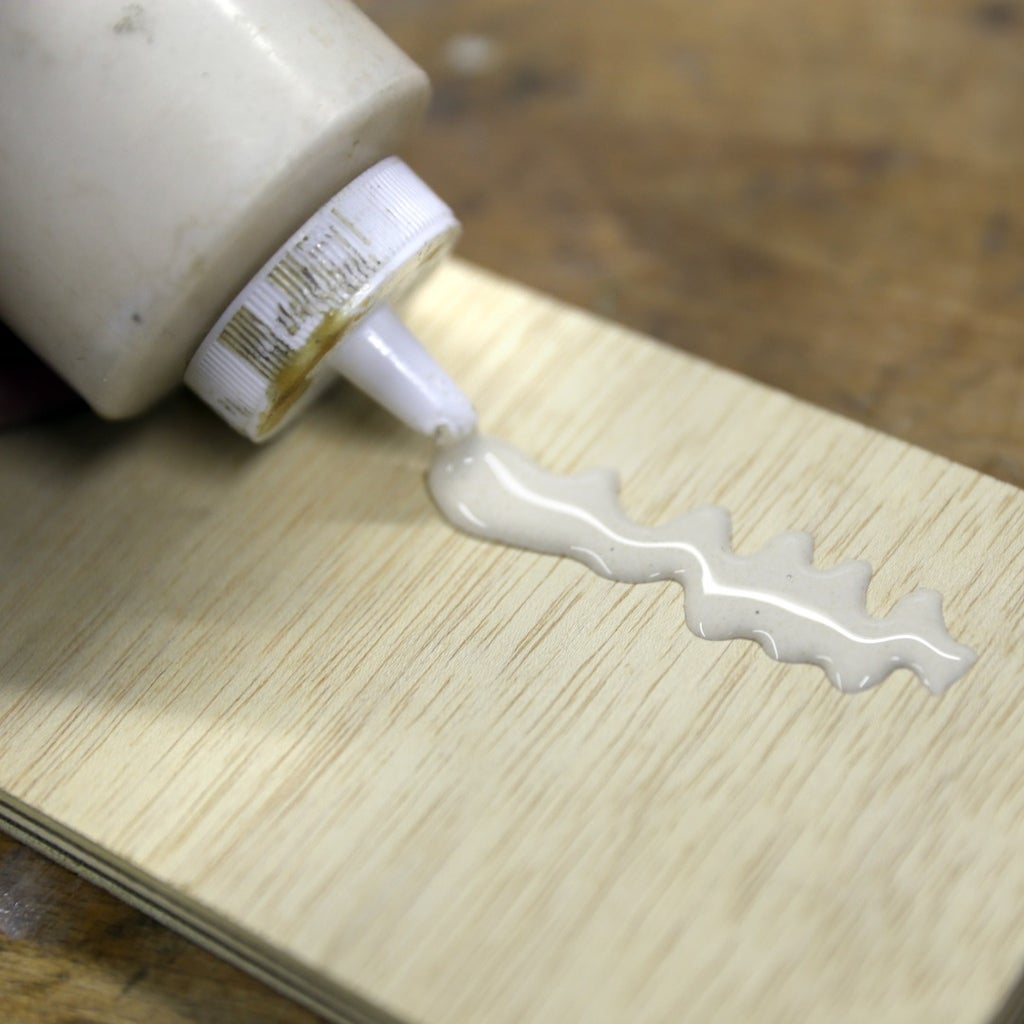
Some other choices for woodworking glue include CA glue (cyanoacrylate or Super Glue), hot glue, or polyurethane construction adhesive (used with a caulking gun); each has its own performance abilities and limitations, but for the scope of this course we're going to cover common carpenter's glue (PVA).
Step 1: Glues and Grains
Gluing two pieces of wood together is fairly straightforward, but you do have to pay attention to the pieces you are gluing.
You'll hear the term "wood grain" used in the workshop. Wood grain is the longitudinal arrangement of the wood fibers and is an important attribute to understand for woodworking. Different types of wood have different grain structure, but all wood has a "direction", this can be categorized as straight grain (parallel along the direction of the grain) or cross grain (perpendicular to the direction of the grain).
When gluing it's important to know that the two aspects that make a good joint are surface area, and grain direction. Surface area is the amount of surface that will be glued together, so a butt joint connection will have less surface area than a finger joint connection.
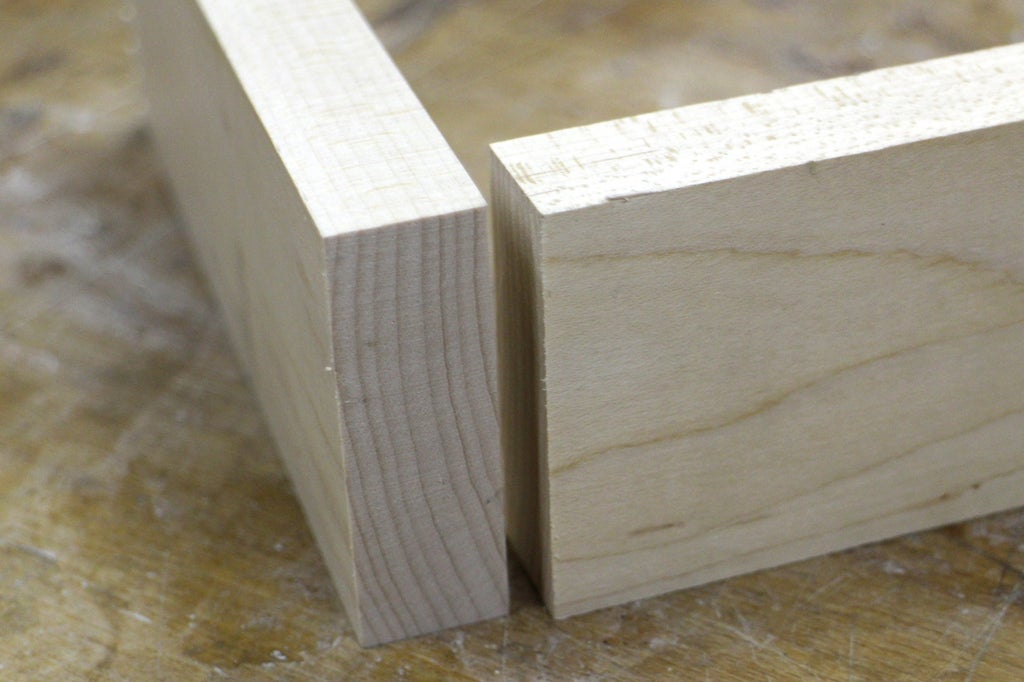
Butt joints have low surface area
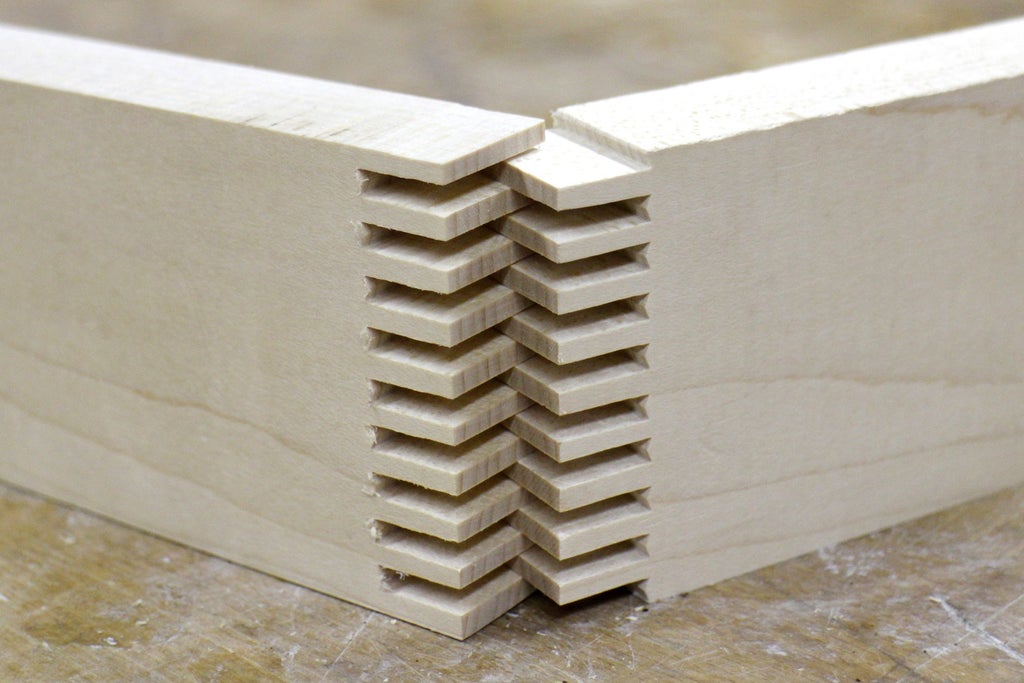
Finger joints have much more surface area between each finger
The grain direction means that a joint along the direction (straight grain) of the grain will be stronger than one that is against the grain (cross grain).
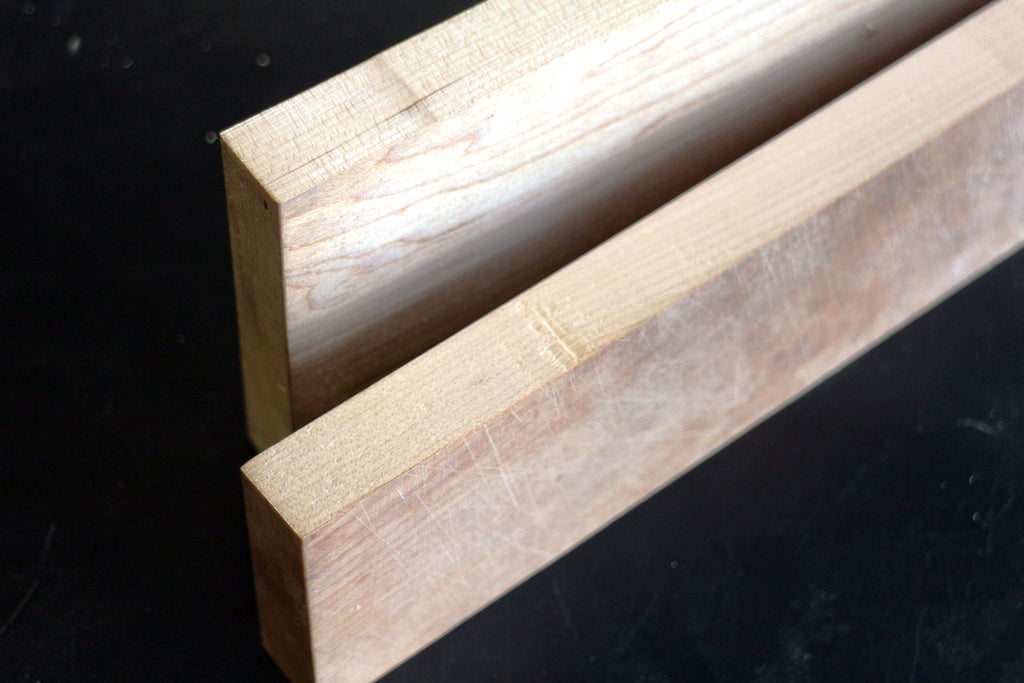
Straight Grain
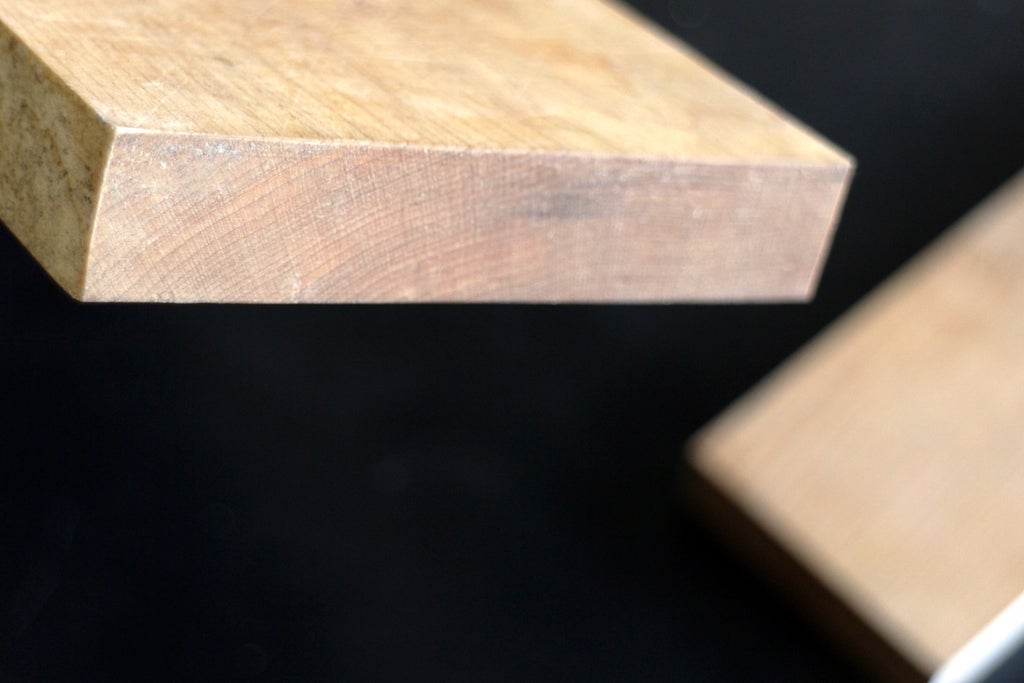
End Grain
This is easily seen if you look at the end grain if a piece of wood, the porous end grain doesn't have the same strength as gluing along the grain. While end grain glue joints can work, they will probably fail eventually or will require some other method to help support the joint. A good everyday example of this is a picture frame, which has mitred corners which are end grain - if you look you'll probably see a nail or some other supporting joinery which holds the joint together. We'll tackle this exact problem in Lesson 8 - Bevels and Mitres when we build our own custom picture frame.
Step 2: Clamps
With almost every woodworking project you make you're going to need a clamp somewhere along the way. Clamps allow you to hold things together while glue dries, or just hold a piece in place temporarily while you work on another part. There's loads of different types of clamps out there, and you can never have too many of them!
Shown above there's a band clamp, a bar clamp, a spring clamp (also called an A-clamp), and a ratcheting bar clamp. There's plenty more types of clamps out there, and they all have a variety of uses.
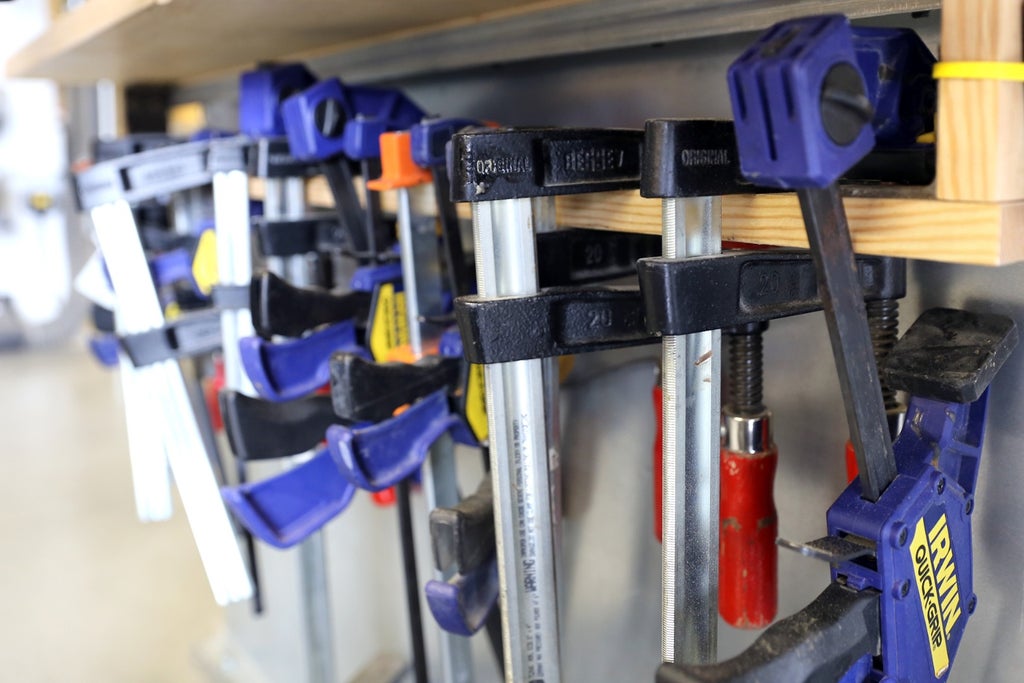
When using glue you're going to want to use clamps to keep your work securely in place while the glue dries. Invest in a few clamps of different types and sizes to start off to find the type that works best for you, it's one of the best tools in the shop.
Step 3: Cover Work Area Before Gluing
A common mistake is to start a glue up without covering your work area before you start, at best this makes a big mess to clean up but at worst it can result in gluing your project to your workbench! Rolls of "builder's paper" are inexpensive, but old newspapers serve the same function and are free.
When your glue dries to the paper it'll be much easier to remove with a knife, scraper, or sanding than trying to repair damage from having it stuck to your workbench.
Step 4: Glue Application
There's nothing special about applying carpenter's glue, but it's important to take care when applying and to use the right amount.
Before starting any glue up consider first what you're going to need to hold your piece together, maybe it's a few clamps, or maybe it's tape. Make sure you have your supplies close at hand before starting anything, it's a real pain to scramble afterwards for that last clamp.
When you're ready to glue apply a bead along your work surface, then drag your finger along the bead to evenly spread out the glue.
Since glue can cause wood to swell where it's applied it's important to joint the pieces quickly after glue application, this is especially true for joints that have tight tolerances.
Step 5: Clamping + Cauls
Once the surfaces are glued together you can clamp your work until the glue has set. When clamping it's good to apply pressure to the pieces being glued, but over-tightening can cause too much glue to squeeze out the pieces may not bond.
For some pieces you may need clamping pressure on the top and bottom to keep your pieces level or aligned. Adding straight scrap pieces to the top and bottom of your glue up, and then clamping them in place, can help keep your work stable and level. These wood pieces that transverse the glue-up on the top and bottom are called cauls.

Cauls added to top and bottom of clamped piece
To make things even easier for cleanup you can add a barrier of paper between the cauls and your work so you don't accidentally glue them together.
When tightening your clamps make sure not to over-tighten, which not only squeezes out all the glue, but can also dent and damage your work.

Dent in wood caused from over-tightening
Step 6: Quiz - All About Glue
{
"id": "quiz-1",
"question": "PVA glue stands for Pliable Very Adhesive glue",
"answers": [
{
"title": "True",
"correct": false
},
{
"title": "False",
"correct": true
}
],
"correctNotice": "Correct! PVA glue stands for polyvinyl acetate.",
"incorrectNotice": "That's incorrect"
}
{
"id": "quiz-2",
"question": "End grain glue ups are just as strong as straight grain glue ups",
"answers": [
{
"title": "True",
"correct": false
},
{
"title": "False",
"correct": true
}
],
"correctNotice": "Correct! End grain glue ups are much weaker and require a special joint or mechanical fastener to make a good connection.",
"incorrectNotice": "That's incorrect"
}
{
"id": "quiz-3",
"question": "When clamping a glue up it's best to squeeze the pieces together very tightly until almost all the glue seeps out.",
"answers": [
{
"title": "Clamp until you can't aply any more pressure.",
"correct": false
},
{
"title": "Clamp firmly, but not so tight as to remove all glue from joint.",
"correct": true
}
],
"correctNotice": "Correct! Squeezing a glue up too tightly will remove all the glue in the glue up and prevent adhesion, and very tight clamping can cause indents to the wood.",
"incorrectNotice": "That's incorrect"
}
{
"id": "quiz-4",
"question": "Why should you avoid using a damp sponge or towel to clean up excess PVA glue after it's been applied?",
"answers": [
{
"title": "Moisture from the damp sponge or towel can cause the wood to swell and deform.",
"correct": true
},
{
"title": "Water can splash around and make a big mess.",
"correct": false
},
{
"title": "PVA glue is not water soluble.",
"correct": false
}
],
"correctNotice": "Correct! When introduced to water wood can swell and deform. While this isn't terrible, it can represent more finishing work later.",
"incorrectNotice": "That's incorrect"
}
Step 7: Glue Cleanup From Wood
One of the best methods to remove excess glue from your work piece is to rub sawdust all over the joint. The sawdust will mix with the glue and clump together, making cleanup a breeze. You should avoid using a wet towel or sponge as moisture causes wood to swell and too much might deform your work. Sawdust is an easy and readily available solution to glue cleanup.
It is important to clean up the extra glue as soon as possible since wood that absorbs glue will stain differently than the rest of the wood.
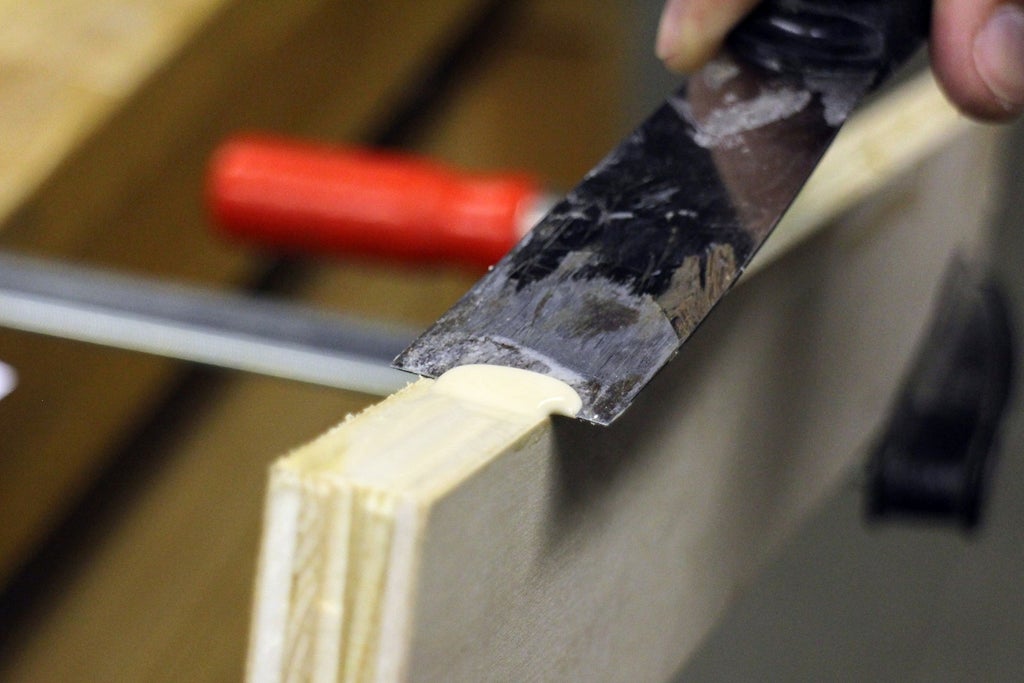
A putty knife makes a great tool for both glue application and clean up
Another great method for applying and cleaning glue is a putty knife, the flat surface does a great job of evenly spreading glue over your surface and the sharp edge makes cleaning up excess glue easy.
Step 8: Glue Cleanup From Hands
If you get any glue on your hands after your piece is secure you can easily remove it by just rubbing your hands together. Wet or still damp glue should just flake off.
Step 9: Wrap Up
PVA glue is invaluable to a woodworker, and can offer much more strength to wood when bonding along the grain than mechanical fasteners.
However, glue is not the solution to ever problem a woodworker will face. In the next lessons we'll learn about drilling openings, which then can be used for mechanical fasteners like screws; perfect for applications where you don't want to rely on glue.













